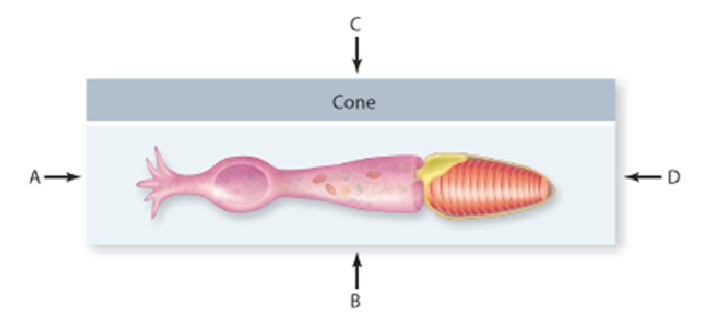After the action of the helicase, single-stranded binding proteins keep the parental DNA strands from reforming a double-helix
Indicate whether the statement is true or false
TRUE
You might also like to view...
The signaling molecule involved in juxtacrine cell signaling is:
A. a small soluble peptide. B. a neurotransmitter. C. a transmembrane protein. D. a growth factor.
Which letter indicates the direction of incoming light in a typical vertebrate?
Vision differs from the other senses in two interesting ways. Although most sensory receptor neurons are depolarized when the receive a stimulus, rod and cone cells become hyperpolarized when they receive light. When hyperpolarized, they stop releasing inhibitory neurotransmitter and allow the bipolar cells to fire. A second unusual aspect is that the vision circuit seems to be organized "backwards" -- the light must pass through the layers of ganglion and bipolar cells to reach the rods and cones.

A. A
B. B
C. C
D. D
E. All of the directions are possible.
Many times species are composed of networks of distinct populations called metapopulations. When do metapopulations occur?
A. When a population is large and uniformly distributed. B. When a population in poor habitat continually sends out dispersers to bolster populations in better habitats. C. When a population in a better habitat does not send out colonizers into less suitable habitats. D. When suitable habitat is patchily distributed and separated by areas of unsuitable habitat.
Parapatric speciation occurs most often ____
a. within in the same home range b. populations inhabiting different areas while maintaining contact along a common border c. within a group of interbreeding populations d. on either side of geographic barriers e. by polyploidy